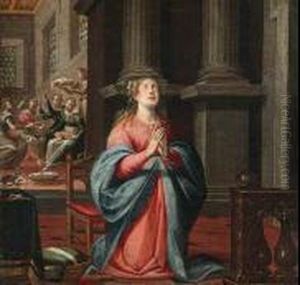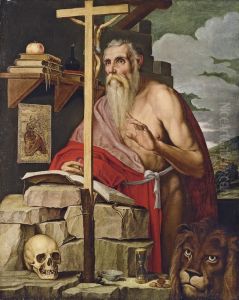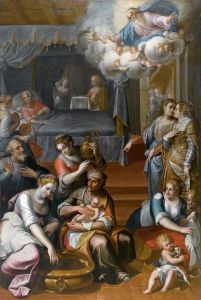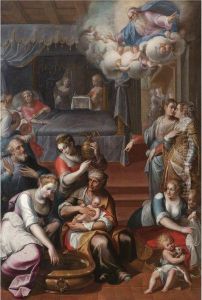Paolo Camillo Landriani Paintings
Paolo Camillo Landriani, also known as Paolo da Lodi, was an Italian painter who was born around 1560 in Lodi, Lombardy, Italy. He is recognized for his work during the late Renaissance period, primarily within the Mannerist tradition. Landriani's contributions to the art world are often characterized by his religious paintings, frescoes, and altarpieces, which he created for various churches and institutions in Northern Italy.
Landriani received his artistic training in Milan, where he was influenced by prominent local painters such as Bernardino Campi and Giulio Cesare Procaccini. While not much is known about his early life and training, it is evident that he was well-versed in the prevailing artistic trends of the time, incorporating both the dynamism of Mannerism and the emerging naturalism that would come to define the Baroque period.
Throughout his career, Paolo Camillo Landriani was an active painter in Milan and its surroundings. His works were primarily religious in nature, reflecting the Counter-Reformation's emphasis on clear, instructive, and inspirational religious art. One of his significant works is the 'Martyrdom of St. Catherine' for the church of Santa Maria della Passione in Milan, which showcases his skill in composition and his ability to convey dramatic intensity.
Despite his contributions, Landriani did not gain the same level of fame as some of his contemporaries. His style, while competent, was sometimes regarded as conservative compared to the innovations introduced by more prominent artists of the late 16th and early 17th centuries. Nevertheless, his work was appreciated for its clarity and devotional quality.
Paolo Camillo Landriani's death is recorded in 1618. Although he may not have achieved widespread fame, his paintings remain a testament to the religious and cultural milieu of Lombardy during the transition from the Renaissance to the Baroque. His works continue to be studied for their representation of the stylistic shifts occurring during this pivotal moment in art history, and they can still be seen in churches and collections in and around Milan.



